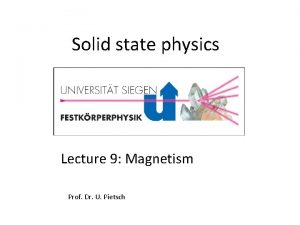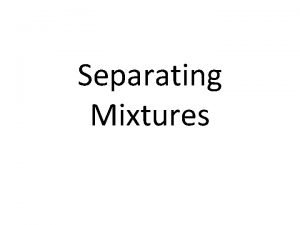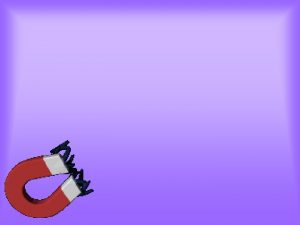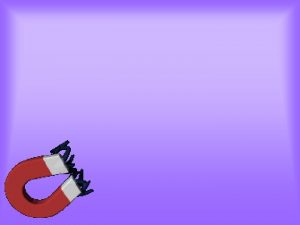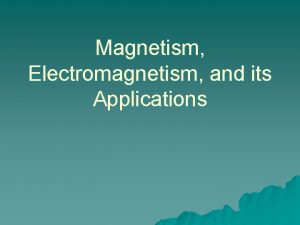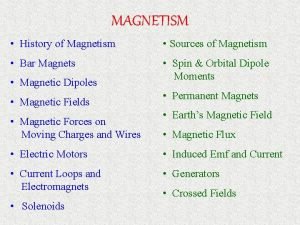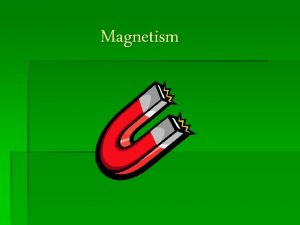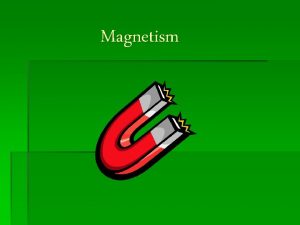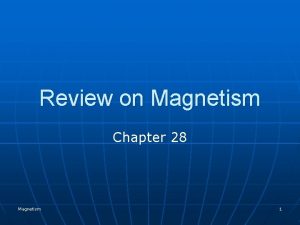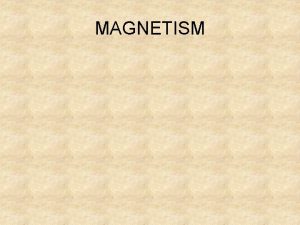MAGNETISM 1 INTRODUCTION History of magnetism 2 Laws










- Slides: 10

MAGNETISM 1 • INTRODUCTION • (History of magnetism) 2 • Laws of magnetism • (Important four properties) 3 • Artificial magnet • (Electrical methods)

History Of Magnetism During 600 BC an ore was discovered which had the property of attracting small pieces of iron. This ore was a black oxide of iron called magnetite.

PROPERTIES OF A MAGNET � 1 Attractive property- A magnet can attract certain material like iron nickel cobalt etc. � These attractive properties are concentrated at the ends of a magnet called poles

2 Directive property (lodestone) � 2 When a magnet is freely suspended it always orient along north south direction.

3 Poles exist in pairs If a long magnet is broken into two pieces, each piece is found to be an individual magnet having its own pair of opposite poles at its two ends. �

4 THE LAW OF MAGNETISM � Like pole repel and unlike poles attract each another.

CLASSIFICATION OF MATERIALS � Materials Magnetic (Iron, nickel, cobalt ) (copper, brass, aluminium) � Non magnetic

1. Single touch method 2. Divided touch method

3. By electric current

SUMMARY 1 The substance which has the property to attract small pieces of iron and of setting along a definite direction when suspended freely , is known as magnet. 2 When a magnet is suspended freely, it always sets in north south direction. 3 The point on magnet where the attraction appears to be maximum are called poles. 4 Like poles repel each other while unlike poles attract each other. 5 Poles exist in pairs. 6 Magnetisation can be done either by single touch , double touch or by electrical method 7 Materials are classified in to two, magnetic and non-magnetic.
 Charles de secondat
Charles de secondat Physics 102 electricity and magnetism
Physics 102 electricity and magnetism Ib physics topic 5 question bank
Ib physics topic 5 question bank Aaron ahuvia
Aaron ahuvia Magnetism in solid state physics
Magnetism in solid state physics Example of using magnet in separating mixtures
Example of using magnet in separating mixtures Electricity and magnetism lecture notes
Electricity and magnetism lecture notes Hans christian oersted magnetism
Hans christian oersted magnetism An invisible pulling force
An invisible pulling force It is an invisible force
It is an invisible force Applications of magnetism
Applications of magnetism




